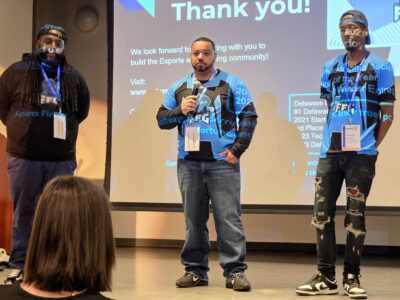Tech skill gaps continue to impact both employers and employees across the globe, according to a survey released late April by online workforce development company Pluralsight.
Despite what seems like a constant stream of big tech layoffs, companies still face a shortage of tech talent. Letting a good tech employee whose skills have fallen behind go could mean weeks or months of searching for someone new.
One thing we hear from technologists year after year is that learning is an ongoing process.
Technology moves so fast that what you started learning in your first year of college might be obsolete by the time you graduate. When a company hires an employee and finds that their knowledge can’t keep up with the pace of innovation, they have a choice: They can hire someone else, or they can upskill the worker. The latter certainly costs less, according to the report.
Pluralsight surveyed 1,400 executives and IT professionals in the U.S., UK and India about keeping up with a rapidly changing tech landscape for its 2024 Technical Skills Report. The results spotlight industry skill gaps, how companies fill those gaps and barriers to upskilling.
Cybersecurity looms as the biggest skills gap
While 78% of organizations surveyed said that their tech skill gaps have improved since the previous year, the dearth of critical expertise still remains. Those gaps can lead to employee burnout and abandoned projects. A majority of organizations said they have dropped projects partway through because of a lack of employees with the right tech skills.
While AI is becoming increasingly utilized in workplaces, that’s not where organizations are seeing the biggest gaps, at least not yet. Nearly two-thirds of executives reported cybersecurity skills gaps, and about half cited either cloud or software development.
But workers, and the companies that hire them, look for ways to skill up. Remember the declarations that coding bootcamps were dying out five years ago? It’s true that some of the heavyweight bootcamps of the 2010s went under, but intensive tech education cohorts are still needed to keep the talent pipeline healthy. The programs that continue to thrive offer expanded offerings compared to the standard ‘10s bootcamp, updated methods, increased inclusion and bridge opportunities like externships.
As for AI, its current low priority status in the 2024 study suggests that the technology still hasn’t become a part of the daily workflow. Seeing as Pluralsight’s 2024 AI Skills Report showed that nearly 90% of organizations surveyed had plans to increase AI spending, AI will likely become more prioritized. In the meantime, don’t sleep on cybersecurity, cloud and dev.
Hiring a new worker costs more than upskilling current talent
On average, it takes 10 weeks to fill a tech position in the U.S., costing the company $23,450 in downtime, according to the report. These figures are based on a formula calculating the role’s organizational value.
In all cases, that’s substantially more than paying upskilling costs. For more than half of the organizations surveyed, upskilling costs around $5,000, with an average of $15,000 spent per employee to get them up to speed. And, depending on the type of upskilling, there won’t be an empty role for two-plus months.
Time and money stop businesses from upskilling
The biggest barrier to organizational upskilling is time. Intensive upskilling may require weeks of full-time training. Even more flexible programs rely on two major factors: employer support and employee engagement, both found to be pain points when it comes to upskilling, according to Pluralsight.
The last barrier is simply that it’s expensive and not every organization is willing to pay for it.
Still, one return on investment for employers who chose upskilling: It gives employees more confidence and a greater feeling of job security amidst big tech tech layoffs.
Before you go...
Please consider supporting Technical.ly to keep our independent journalism strong. Unlike most business-focused media outlets, we don’t have a paywall. Instead, we count on your personal and organizational support.
3 ways to support our work:- Contribute to the Journalism Fund. Charitable giving ensures our information remains free and accessible for residents to discover workforce programs and entrepreneurship pathways. This includes philanthropic grants and individual tax-deductible donations from readers like you.
- Use our Preferred Partners. Our directory of vetted providers offers high-quality recommendations for services our readers need, and each referral supports our journalism.
- Use our services. If you need entrepreneurs and tech leaders to buy your services, are seeking technologists to hire or want more professionals to know about your ecosystem, Technical.ly has the biggest and most engaged audience in the mid-Atlantic. We help companies tell their stories and answer big questions to meet and serve our community.
Join our growing Slack community
Join 5,000 tech professionals and entrepreneurs in our community Slack today!

Major state funding boost means more Maryland college students can get tech internships

Cal Ripken Jr. essay: The MLB legend explains his drive to build STEM centers in schools across the nation

The end of software as technology




